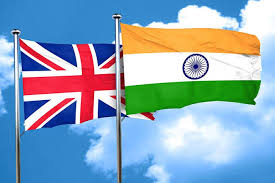India-UK Free Trade Agreement:

India and the UK have signed a India-UK Free Trade Agreement (FTA), marking a significant step between the world’s 5th and 6th largest economies amid ongoing global trade volatility and tariff uncertainties.
Key Highlights of the India-UK FTA:
- UK is India’s 4th largest export destination and India is UK’s 11th largest trading partner. The bilateral trade of about USD 60 billion is projected to double by 2030.
- It is India’s 16th FTA, and the UK’s most significant bilateral trade deal post-Brexit.
- The FTA grants zero-duty access for 99% of Indian exports to the UK, including textiles, apparel, leather, footwear, marine products, sports goods, toys, gems and jewellery, auto parts, engineering goods, and organic chemicals.
- Automobiles tariffs cut to 10% under a quota, down from over 100%
- It also promotes labour mobility. About 100 additional annual visas for Indian professionals, particularly in IT and healthcare
- Double Contribution Convention Agreement: India and the UK also signed a Double Contribution Convention Agreement (also called a Social Security Agreement) as one of the key aspects of the deal.
- It will ensure that professionals in either country are not forced to pay national insurance or social security contributions in both countries.
- An FTA is a trade pact between two or more nations that aims to reduce or eliminate customs duties and trade barriers on goods traded between them.
- FTAs, unlike Preferential Trade Agreements (PTAs), offer comprehensive tariff elimination on most goods, whereas PTAs provide only limited tariff concessions on select products.




